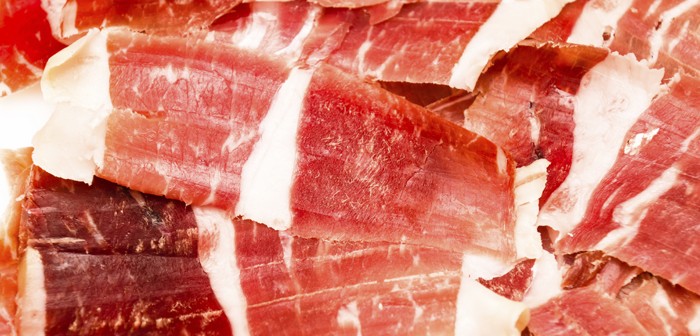Extremadura produces the best Iberian hams in the world each year
Extremadura is closely linked to the production of Iberian ham. No wonder. It has nearly one million acres of pasture, a perfect ecosystem where thousands of pigs per year coexist with native species like the eagle, wild boar and deer.
It is the Designation of Origin (DO) “Dehesa de Extremadura” (Meadow of Extremadura), also protected by the European Union, which ensures that the annual production is the best in the world. You can expect to pay up to 70 euros per kilo of this delicacy.
But how to distinguish an Iberian ham with this DO? Pigs must be 100% Iberian or crossed with at least 75% Iberian blood. Then the hams must have a minimum curing of 20 months and weigh at least five kilos. The shoulders should be cured for at least 12 months and weigh a minimum of three and a half kilos. In addition, all parts should be cut using a “V” cut and carry identifying elements, such as a numbered tag and a plastic seal with the numerical identification of the campaign.
The interest in knowing this type of ham, a high-level cuisine product, has made Extremadura institutions create the Ham Dehesa de Extremadura Route with the aim of publicizing the product, traditions and culture associated with breeding this animal.
This route includes more than 30 municipalities in the province of Badajoz, including Jerez de los Caballeros or Fregenal de la Sierra, which can be reached in less than an hour from Merida.
Thanks to this initiative, tours can be conducted of farms in the meadows, so that guests watch the pigs being raised and how the hams are then stored in the dryers. In addition, you can go to tastings and ham-cutting courses. An art to take to your own table.
10 Commandments for cutting the ham
- Cut and serve immediately at room temperature.
- Use a good ham holder with a strong hold.
- Well-sharpened knives, designed for such cutting: a rigid one with broad blade to prepare, clean and peel the ham. A flexible one with a long and narrow blade for cutting slices.
- Peel the ham and separate the fat as it is consumed.
- Cut by type of consumption: if you are going to consume quickly start at the main area. If not, at the stifle to prevent it from drying.
- Cuts always parallel to each other and downwards.
- Very thin, almost transparent slices.
- The slices should be presented on a dish in a single layer.
- Meat near the bones that can not be cut into slices can be consumed in taquitos.
- The bones can be used for cooking soups.






